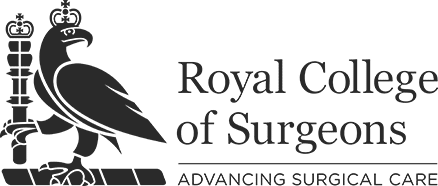There are some important NHS pension changes and deadlines to be aware of. We asked George Crowe, specialist medical accountant to give us a summary.
What are the changes to the tapering of the annual allowance that were announced in the 2020 budget?
From 16/17 to 19/20 if threshold income exceeded £110,000 and adjusted income exceeded £150,000 the annual allowance is tapered. These thresholds were increased for 20/21 to £200,000 and £240,000 respectively..
How do I work out what my pension input amount is for the year?
With difficulty. NHS Pensions should provide a pension savings statement with this information on it, but it’s usually not available until closer to the tax return filing deadline and we’ve seen a large number of the statements be incorrect. Other options are the BMA Goldstone pensions modeller which is available to BMA members but is only for consultants and is reliant on the information being input being accurate. Or seeking professional assistance from an accountant or financial advisor.
Due to the above it’s worthwhile getting a professional to review your position. Not only to ensure the figures are accurate, but to help with making future decisions to put you in the best financial position possible.
So the thresholds mean that most people will have a full £40,000 allowance now, does that mean that annual allowance tax charges are a thing of the past?
Unfortunately not, it’s quite common to see pension input amounts in excess of £40,000 for example:
- If there is growth across all schemes, 1995, 2008 and 2015.
- For an officer, if pensionable pay exceeds £130k, growth will be around £40k. Anyone on a level 7 or 8, 14+ years of service, could be caught. Even if you are a lower earner doesn’t mean you are safe.
- For a practitioner, the pensionable pay figure needed to breach the threshold is likely to be slightly lower due to a difference in how the pension benefits are calculated.
What are the options available to someone that does have an annual allowance tax charge?
The choices are pay the tax charge personally, or elect for the scheme to pay. If paid personally it must be paid by 31 January following the end of the tax year. Be aware that the amount is included in calculation of payments on account, so payment could be 1.5x charge due to paying on account for next years charge too. Alternatively, you can elect for the scheme to pay either all or some of the charge.
How does a scheme pays election work and are there any deadlines to make an election?
You must enter the charge on your tax return and also make entries to say that the tax charge has been paid by the scheme.
A scheme pays election form must be completed and submitted to NHS Pensions.
The deadline for a scheme pays election is 31 July the year after the end of the tax year, so tax year ended 5 April 2020, elections must be submitted by 31 July 2021.
NHS Pensions pay tax charge quarterly and payment dates don’t align with HMRC tax payment deadline of 31 January. HMRC can, and have, charged late payment interest when the tax charge isn’t paid by NHS Pensions by 31 January. Late payment interest is payable by the individual, not NHS Pensions.
NHS Pensions announced that they would pay annual allowance charges for 2019/20, how does that work?
Everything works exactly the same for 2019/20 as in any other year, with an additional step, a compensation form has to be completed and submitted. The form has now been released. https://www.england.nhs.uk/publication/annual-allowance-charge-application-form-and-guidance-notes/
Due to possibility of late payment interest charges by HMRC we would recommend submitting scheme pays elections and submitting the compensation claim form when released to avoid delays.
What are the implications of not including an annual allowance tax charge on your tax return?
Self-assessment tax returns are your responsibility to complete accurately and disclose all relevant information. The excuse of NHS Pensions not providing the figures in time is unfortunately not a reasonable excuse as HMRC will argue that it’s up to you to calculate the position and disclose any charges. If an amount isn’t included and a return is subsequently amended then HMRC can, and will, charge late payment interest. It is also possible for HMRC to charge penalties due to the error, although given the complexities involved with the calculations it’d be surprising if they did this. In addition, if you would want the scheme to pay a tax charge and the scheme pays election deadline has passed then NHS Pensions are under no obligation to accept the election, leaving you with a large tax bill. On the other hand, if you include a figure based on the information that NHS Pensions provide and this figure then turns out to be incorrect, an amended return will need to be submitted. If the tax liability increases then there could be late payment interest charged. In this situation, NHS Pensions and HMRC are usually more lenient regarding scheme pays acceptance and penalty charges respectively.
What is the NHS Pension Scheme consultation and what does it mean for members of the NHS Pension?
Public service pensions underwent a change to make sure they were sustainable and affordable, which was the introduction of the 2015 scheme. As a result, younger members transitioned to the new scheme, older members did not. In 2018 a court case found that this discriminated against younger members. So members who were affected by transition to the 2015 scheme will be given a choice of which pension scheme they want to be in for the remedy period of 1 April 2015 to 31 March 2022. The choice is between old or new scheme for the period. Also worth noting that all members will transition to the 2015 scheme from 1 April 2022. A consultation sought views on when the decision would have to be made, either immediate choice implemented in 2022 or deferred choice underpin which would be implemented at point of retirement, if DCU then members would revert back to old scheme for the 7 year period initially. The consultation has now closed and we will update you with the outcome shortly.
What impact could this have for tax purposes?
As this could change the scheme membership over the 7 year period it could impact on the annual allowance position in each of those years. If additional charges arise then these are bound by the 4 year statutory time limit to amend tax returns. If repayments arise these are not time limited so can go back full 7 years. Things that should be considered at the point in making a decision include: the value of the pension at retirement, whether the scheme gives an automatic lump sum, retirement age associated with the scheme, ill health retirement benefits and survivor benefits. We always recommend seeking financial advice before making any decisions.
Contact George and the team at Larking Gowen specialist medical accountants here
https://www.medicsmoney.co.uk/accountant/mha-larking-gowen/
Join 24,000 doctors receiving free financial CPD like this by downloading our ebook
https://www.medicsmoney.co.uk/ebook/
Subscribe to the Medics Money podcast here
Apple – http://tiny.cc/MMapple
Spotify – http://tiny.cc/MMspot
Google – http://tiny.cc/MMandroid








